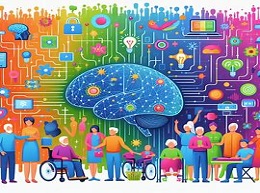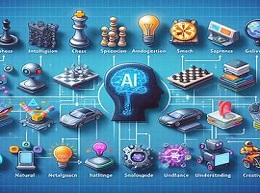Challenges and Solutions in Natural Language Generation

Natural Language Generation (NLG)
Natural Language Generation (NLG) is a branch of artificial intelligence (AI) that focuses on generating human-like text from structured data. NLG systems analyze input data, such as numerical or categorical information, and transform it into coherent and grammatically correct natural language text. While NLG has made significant advancements in recent years, it still faces several challenges that need to be addressed for optimal performance. In this article, we'll explore some of the key challenges in NLG and the solutions being developed to overcome them.
Challenges in Natural Language Generation
-
Generating Coherent and Fluent Text: One of the primary challenges in NLG is producing text that is coherent, fluent, and contextually appropriate. NLG systems must understand the nuances of language and generate text that flows naturally, which can be particularly challenging for complex or ambiguous input data.
-
Handling Ambiguity and Uncertainty: Natural language is inherently ambiguous and can contain multiple interpretations or meanings. NLG systems must be able to handle ambiguity and uncertainty effectively to generate accurate and contextually relevant text.
-
Maintaining Consistency and Style: Consistency in language usage and maintaining a consistent writing style are essential for producing high-quality text. NLG systems need to ensure that generated text adheres to predefined style guidelines and maintains consistency throughout.
-
Addressing Domain-Specific Knowledge: NLG systems often require domain-specific knowledge to generate accurate and relevant text. Incorporating domain knowledge into NLG models can be challenging, especially for niche or specialized domains where data may be limited.
Solutions to NLG Challenges
-
Advanced Natural Language Processing (NLP) Techniques: Leveraging advanced NLP techniques, such as deep learning and transformer models, can improve the ability of NLG systems to understand and generate natural language text. Models like GPT (Generative Pre-trained Transformer) have shown promising results in generating coherent and contextually relevant text.
-
Fine-Tuning Pre-trained Models: Fine-tuning pre-trained NLG models on domain-specific data can enhance their performance and enable them to generate text that is tailored to specific domains or industries. Fine-tuning allows NLG systems to learn domain-specific patterns and terminology, improving the quality of generated text.
-
Contextual Understanding and Generation: Enhancing NLG systems' ability to understand context and generate text that is contextually relevant is crucial for overcoming challenges related to coherence and fluency. Techniques such as attention mechanisms and contextual embeddings can help NLG models capture and incorporate contextual information into text generation.
-
Quality Assurance and Human Review: Implementing quality assurance processes and incorporating human review into NLG workflows can help identify and correct errors or inconsistencies in generated text. Human review ensures that the generated text meets quality standards and maintains consistency with style guidelines.
Real-World Examples
-
Automated Content Generation: NLG systems are used in various industries for automated content generation, such as generating product descriptions, financial reports, and news articles. For example, news organizations use NLG to produce personalized news summaries for their readers based on their interests and preferences.
-
Chatbots and Virtual Assistants: Chatbots and virtual assistants rely on NLG to generate conversational responses to user queries and requests. NLG enables chatbots to understand user input and generate appropriate responses in natural language, providing users with a seamless and intuitive interaction experience.
-
Medical Reporting and Documentation: In healthcare, NLG systems are used to generate medical reports, documentation, and patient summaries based on electronic health records (EHR) data. NLG helps healthcare providers streamline documentation processes and improve the accuracy and efficiency of medical reporting.
Natural Language Generation (NLG) holds immense potential for automating text generation tasks and enhancing communication in various domains. While NLG has made significant strides in recent years, it still faces challenges related to coherence, ambiguity, and domain-specific knowledge. By leveraging advanced NLP techniques, fine-tuning pre-trained models, and incorporating contextual understanding into NLG systems, researchers and practitioners can overcome these challenges and unlock the full potential of NLG for generating high-quality, contextually relevant text.














